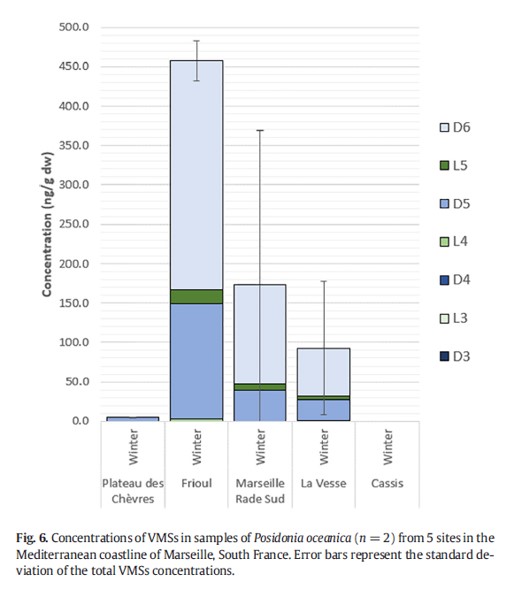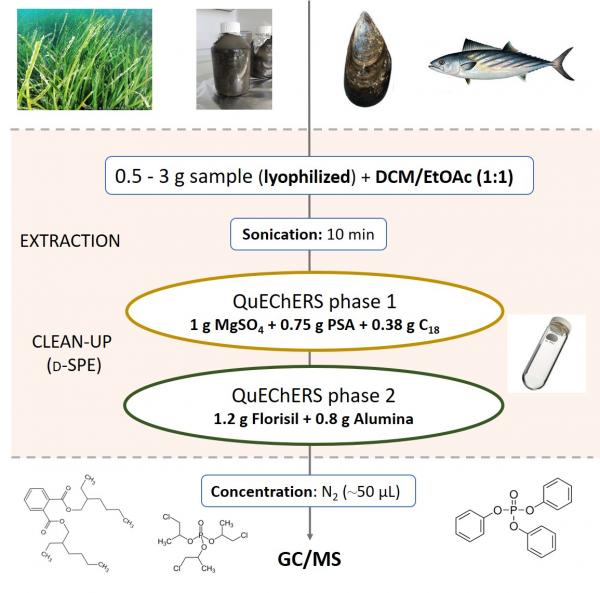Javier Castro Jiménez (MIO)
Nuno Ratola (LEPABE, Portugal)
This project addresses the issue of quantifying contaminants of emerging concern, like plastic organic additives, in complex marine matrices using environmentally friendly approaches. It dealt with sharing and improving an existing laboratory method (QuEchERS) to analysis marine samples in Atlantic and Mediterranean coastal areas.
This project allowed :
1) knowledge transfer of the QuEchERS technique from LEPABE to MIO
Sample were analysis based on the QuEchERS, yiedling the following results: Posidonia oceanica samples from the Mediterranean Sea contained siloxanes, an emerging contaminant class widely used in personal care products and cosmetics and targeted in this project. D5 and D6 were the major compounds found in the Marseille area seaweed, even in winter. The total siloxanes in Posidonia samples ranged from not detected in Cassis to over 400ng/g (dry weight) in the surroundings of Frioul Archipelago.

Source: Rocha et al. 2019 Sci. Total Environ. 650: 2364-2373
2) Joint method adaptation to marine samples
- Method adaptation to OPE analysis: optimization for the analysis of the emerging organophosphate ester (OPEs) flame retardants and plasticizers in various marine matrices (i.e. seaweeds, mussels, fish and beach sand). This is the first application of the QuEchERS method to the analysis of OPE in marine samples.
- Contamination issues with handling and clean-up protocol were identified and partly solved.
This approach was sensitive enough to detect differences in the (bio)accumulation patterns of the target compounds in various species and/or sites. This application opens new perspectives for environmentally friendly marine environment monitoring and screening campaigns for organic plastic additives. The developed method has been applied to the analysis of OPEs and PAEs to various marine complex matrices, with quite promising results.
Summary of the QuEchERS method (Castro-Jiménez & Ratola, 2020)



